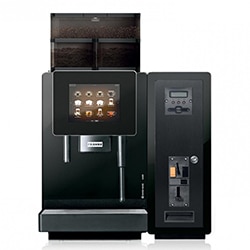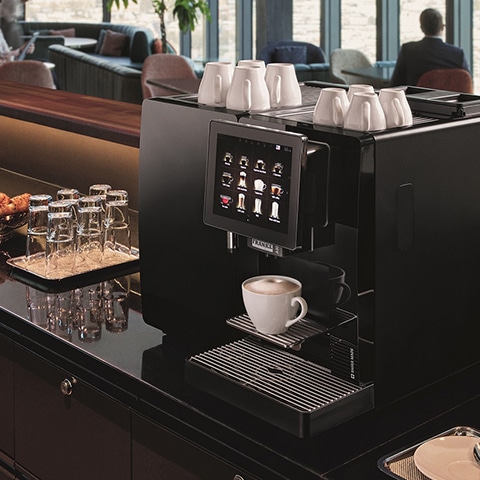Like everything in life there are various brands and models that have different ways of tackling the above process with varying success. This article seeks to explain some of the working of a bean to cup coffee machine and explore their technologies that are used. By the end of this article you will be able to cut through the jargon and make a more informed decision about what it is that you are paying for.
Broadly speaking, bean to cup coffee machines can be broken down into the following 3 broad groups of technology.
1. Variety of drinks available
What variety of drinks can the machine make?
2. Milk system used
The standard of milk used and the quality of the process?
3. Coffee brewing technologies
How does the bean to cup machine make the coffee?
When looking into bean to cup coffee machines it is very difficult to compare like for like as most manufacturers sell several different versions of the same machine. As technology moves forward the versions are multiplying and forever increasing so if something appears to be a good deal it may not be. It may just be a different deal!
Coffee only Bean to Cup Machines
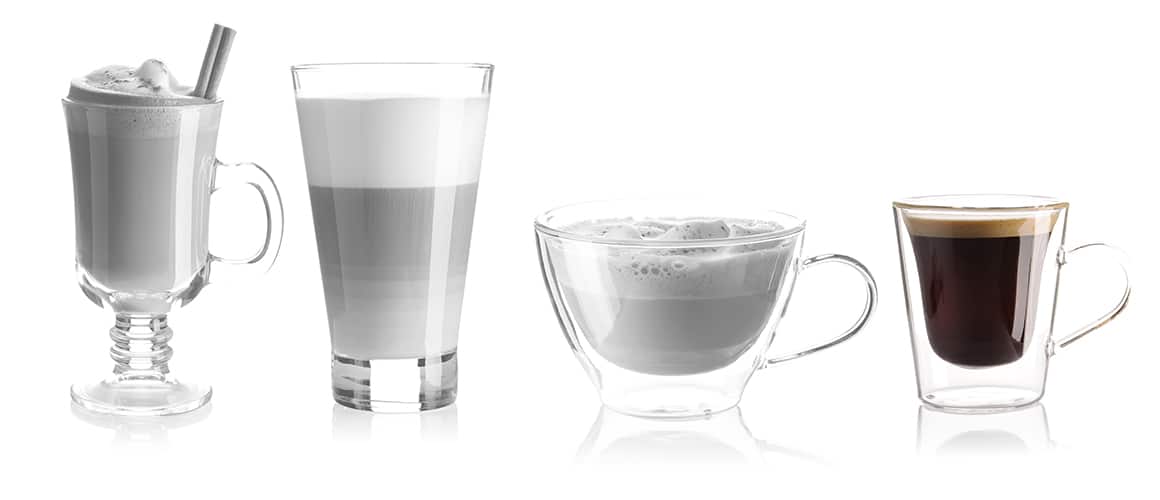
To keep the initial cost low for bean to cup coffee machines many manufacturers advertise a “coffee only” machine as their base model. This does not have the ability to do milk based drinks at all so you are left with just black coffee and espresso capability (for most people 20% of the entire market of drinks).
Fresh or Powdered Milk Bean to Cup Machines
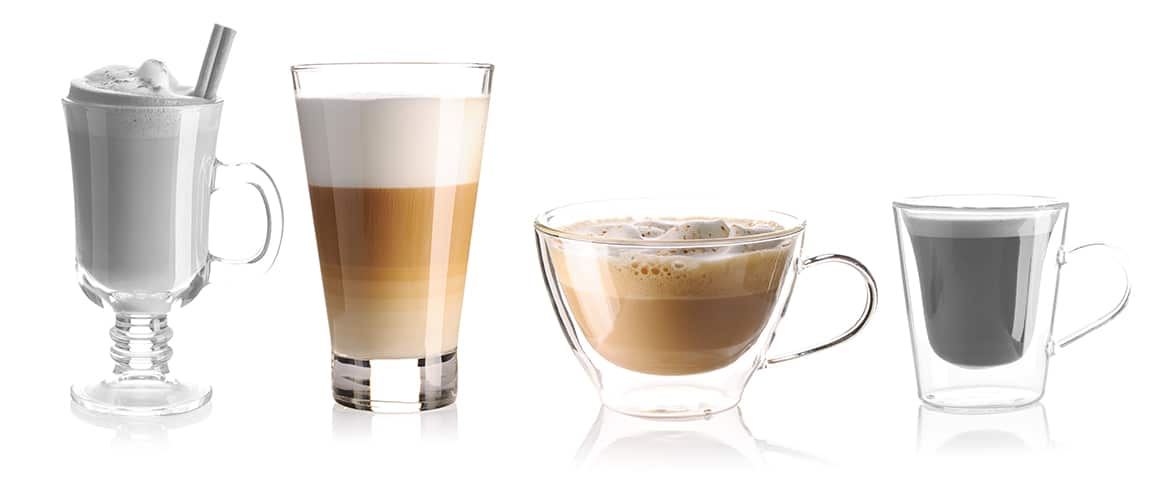
Next you have the addition of milk which opens up the majority of varieties such as the popular latte, cappuccino and flat white coffee drink selections.
Some machines will then add on a second grinder which allows you to do decaf varieties or a guest blend on all of your drinks i.e. cappuccino house blend as well as a cappuccino guest blend.
Next, we have the addition of chocolate based drinks which in terms of coffee sales, is more important than the addition of another coffee type. To put into statistics, over 10% of your drinks will be hot chocolate or mocha etc whereas decaf beverages account for just 5%.
As part of this some of the more advanced bean to cup coffee machines like the Franke A600 and the Crew CM70 offer 2 types of chocolate so you can expand into an even broader range of chocolate based drinks such as white chocolate. This is a nice addition but is the least selling of all of the drink varieties and often the additional hopper is sometimes just used for powdered milk offerings. This is convenient in places where the machine is left unattended for long periods of time.
Size of Drinks on Offer
The last thing to consider in variety is size of drinks. This can make a huge difference in profits as you can see from the below (statistics from 10 Eateries based in the north of England). Some bean to cups do not have the ability to do larger sizes or it is impractical to do so. (Jura for example quotes 1 min 54 seconds for a 12Oz black coffee).
[ninja_tables id=”7100″]
*Prices all rounded to nearest penny and include VAT at prevailing rate for ease of demonstration
2. Milk System Used
QUESTION – Why is it important to know the different methods available?
In this section we will give you a brief overview into the different ways bean to cup coffee machines deliver milk. Hint – it’s more than 1!
In the main there are 3 main milk systems used within bean to cup coffee machines currently on the market. Ranked in order of perceived quality they are.
-
Basic venturi
- Standard restriction
- Variable restriction
-
Geared milk pump venturi or air valve-controlled venturi
- Geared
- Variable air valve
-
Milk whipper system (windle)
Basic venturi
Models: Jura JX6, Giga X3 Nuova Simonelli Prontobar
These machines use a basic venturi system and this same system is used on many domestic machines also. Some of the commercial machines use a restrictor or variable restrictor assembly to squeeze the milk through a smaller pipe prior to mixing with the steam. This has the affect of stepping on a garden hose an slows the flow of the liquid as it heads into the steam junction. This is done to try to heat the milk up more and get it nearer to the ideal range required for cappuccino and latte. Typically this system also produces one type of foam quality also.
Geared milk pump venturi or air valve-controlled venturi
Models: Franke MS, Crew CM50-70, Melitta XT4
Geared milk pump or airalve controlled venturi is an improvement on the previously mentioned basic venturi system. In this system the flow of the milk through the steam is controlled to adjust or improve two factors that are main criticisms of the basic venturi system. The are:
The temperature – This is such an important factor especially in the UK. We are a nation of hot tea drinkers that have now switched to coffee fanatics, but we still prefer our coffee hotter than our European friends. A coffee served warm is likely to be returned and telling them that coffee isn’t meant to be boiling hot is not likely to be received well! The basic venturi system without any control of milk flow typically achieves 50-57 degrees if on a heating block or 57-61 degrees if provided by a pressure boiler. This system reduces the variance in temperature making it much more consistent and achieves temperatures around 65 degrees or higher.
The foam quality – The flow of milk is controlled to allow more or less air into the drink this provides different textures in foam producing a much denser and richer tasting foam similar to that created by a high-end barista. This has a dramatic affect on the cappuccino, flat white and latte. These are the most popular drinks and will typically be over 70% of your overall coffees.
Milk Whipper System (Windle)
In this process a small coil whips the milk into a dense foam whilst simultaneously heating it. The notable models using this sort of system are Black and White, Franke via their Foamaster system and the new boy on the block the Crew CM90. This process typically produces the most dense, thick foam that would rival even the most skilled barista. The heat of the system can also be set and controlled so the milk in this system is typically perfect.
3. Coffee Brewing Technologies
QUESTION – Why is it important to understand coffee brewing technologies?
Many bean to cup machines do not brew the same as traditional coffee machines and can use much more coffee to get a similar taste. To counter this some companies have produced great brewing technologies that make a real difference to the taste and also the coffee used.
High Pressure Brewer Setting (Franke A600)
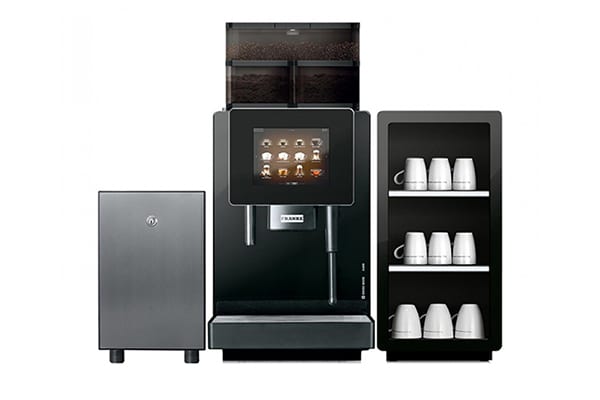
Finer ground coffee can give you a better extraction. Unfortunately this also slows the production of the coffee as the water finds it harder to get through the coffee cake and the production of the drink can be slowed greatly. To get back to an acceptable dispense speed the pressure can be increased in the brewing unit. This higher pressure speeds the flow of the water through the compressed coffee and hence improves the speed at which the drink is produced. Less coffee used means you can lower the cost of producing each coffee through your machine over a year this can add up to a saving of thousands of pounds and a thick rich tasting coffee.
Melitta Laser Mesh (Melitta XT8)
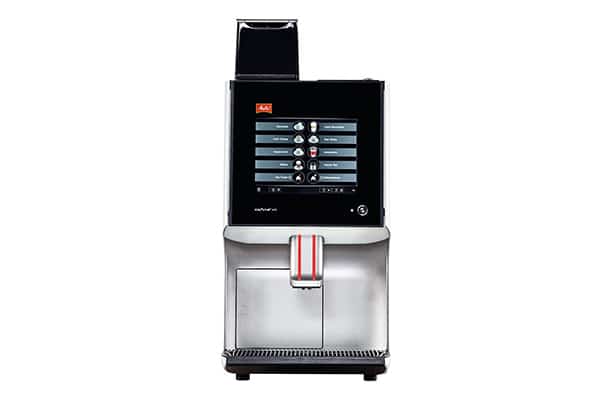
This patented design produces and extremely fine mesh that allows coffee to be ground finely whilst still not allowing these fine grounds through to the cup. The shape of these holes and the design of this filter gives a coffee saving reportedly around 30% or more.
Optimal Dispersal Brewer (Crew CM90)

This brewer focuses on getting a uniform flow of water through the coffee so you get not only a more efficient extraction but also a very consistent taste allowing for the small changes that can often be found in organic products like coffee. The brewer can achieve very high flow rates due to the patent pending design of its filtration systems inside the brewer. The brewing system delivers 20-20% saving on coffee but with its pressure setting or extraction settings is capable of amplifying this cost benefit further and really get an amazing taste out of whatever coffee you are using.
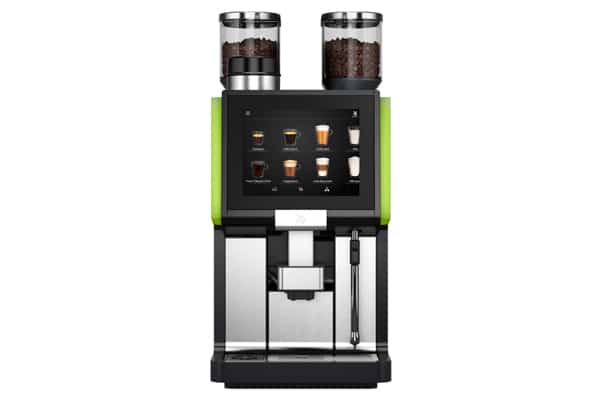
This system allows for easily switching between different sizes of coffee to ensure perfect measurements and ratios are maintained. This stops unnecessary wastage of coffee and also ensures that taste and quality is maintained for small, medium and large drinks. Hence SML!



